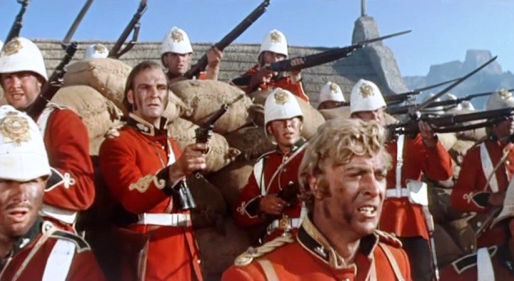top of page
Search
Drama
Classic Drama Films from 1930 - 1999


Loguns Run (1976)
Logan’s Run (1976) is a landmark of 1970s science fiction cinema—an ambitious, visually inventive, and thematically rich dystopian adventure. Released a year before Star Wars, it arrived at the tail end of an era when sci-fi was used not to thrill with action, but to provoke thought. Set in a future society where youth is preserved and death comes by design at the age of 30, Logan’s Run explores hedonism, social control, and the search for authenticity in a sterile, controlle

Soames Inscker
5 min read


The Omega Man (1971)
The Omega Man (1971) is the second and perhaps most culturally emblematic adaptation of Richard Matheson’s influential novel I Am Legend. Starring Charlton Heston at the peak of his post-Planet of the Apes career, the film blends dystopian science fiction, action thriller, Cold War paranoia, and a touch of countercultural sentiment.

Soames Inscker
5 min read


Star Trek II: The Wrath of Khan (1982)
Star Trek II: The Wrath of Khan is not just a landmark within the Star Trek franchise—it is widely considered one of the greatest science fiction films of all time. Released in 1982, this second instalment in the film series resurrected the waning cinematic fortunes of Star Trek after the lukewarm reception of Star Trek: The Motion Picture (1979).

Soames Inscker
5 min read


Zulu (1964)
Zulu (1964) stands as one of the most iconic British war films ever made. Based on the real-life 1879 Battle of Rorke’s Drift during the Anglo-Zulu War, the film dramatizes the desperate defense of a remote mission station by a small contingent of British soldiers against thousands of Zulu warriors. Directed by American expatriate Cy Endfield and produced by its star, Stanley Baker, Zulu is an enthralling combination of widescreen spectacle, military drama, and character stud

Soames Inscker
5 min read


Suddenly, Last Summer (1959)
Suddenly, Last Summer (1959) is a riveting, disturbing, and richly layered film adaptation of Tennessee Williams’s one-act play, expanded into a full-length feature with the help of screenwriter Gore Vidal and under the elegant, often provocative direction of Joseph L. Mankiewicz. The film dives deep into themes of repression, mental illness, class, and sexual secrecy with an intensity that was bold for its time and still feels unsettling today.

Soames Inscker
5 min read


The Barefoot Contessa (1954)
Joseph L. Mankiewicz’s The Barefoot Contessa (1954) is a lush, moody, and ultimately tragic examination of fame, class, and illusion. A film both enchanted by and critical of the Hollywood dream factory, it tells the rise-and-fall story of a fictional movie star—Maria Vargas—through a prism of male narration and personal regret. It is equal parts melodrama and satire, as much about the people who surround a star as about the star herself.

Soames Inscker
5 min read


A Letter to Three Wives (1949)
A Letter to Three Wives (1949) is a gem of mid-century American cinema, blending drama, satire, and subtle psychological insight with elegant storytelling and razor-sharp dialogue.

Soames Inscker
5 min read


Manhattan Melodrama (1934)
Manhattan Melodrama (1934) is a landmark film that straddles genres—part gangster movie, part courtroom drama, and part romantic triangle—yet rises above the sum of its parts due to sharp direction, strong performances, and a story that explores friendship, fate, and the nature of justice.

Soames Inscker
5 min read


For a Few Dollars More (1965)
For a Few Dollars More (Per qualche dollaro in più), released in 1965, is the second entry in Sergio Leone’s legendary Dollars Trilogy, a follow-up to A Fistful of Dollars (1964) and a prelude to The Good, the Bad and the Ugly (1966).

Soames Inscker
5 min read


A Fistful of Dollars (1964)
A Fistful of Dollars (Per un pugno di dollari, 1964) is more than just a Western—it is a seismic event in film history.

Soames Inscker
5 min read


Two for the Road (1967)
Directed by Stanley Donen and starring Audrey Hepburn and Albert Finney, Two for the Road (1967) is a sophisticated, emotionally resonant, and structurally daring exploration of love, marriage, and memory.

Soames Inscker
4 min read


Love Affair (1939)
Love Affair is one of classic Hollywood’s most cherished romantic films. Directed by Leo McCarey, the film weaves charm, wit, and heartache into a graceful narrative that explores love not only as a passionate connection but as a test of character, sacrifice, and emotional resilience.

Soames Inscker
5 min read


Star Trek: The Motion Picture (1979)
When Star Trek: The Motion Picture premiered in December 1979, it arrived with the immense burden of expectation. Riding the wave of sci-fi popularity in the wake of Star Wars (1977), and propelled by the enduring cult success of the original Star Trek television series (1966–69), Paramount envisioned a grand cinematic rebirth for Gene Roddenberry’s universe.

Soames Inscker
5 min read


The Andromeda Strain (1971)
The Andromeda Strain is a taut, cerebral science fiction thriller that brought a new kind of realism to the genre in the early 1970s. Adapted from Michael Crichton’s breakout 1969 novel and directed by Robert Wise—already well-established from films like The Day the Earth Stood Still and West Side Story—this film stands apart from its contemporaries with a tone of cold precision and scientific authenticity.

Soames Inscker
5 min read


The Day the Earth Stood Still (1951)
Few science fiction films of the 1950s have had the enduring cultural, philosophical, and cinematic impact of The Day the Earth Stood Still. Released during the height of Cold War anxiety and directed with precision and restraint by Robert Wise, this film broke new ground by fusing speculative science fiction with sharp social commentary.

Soames Inscker
4 min read


Born to Kill (1947)
Released in 1947 by RKO and directed by Robert Wise, Born to Kill is one of the darkest, most nihilistic examples of classic film noir. With a story centred on psychopathy, obsession, and moral collapse, it pushed the boundaries of what was acceptable in post war Hollywood. The film tells the story of a dangerous man and the even more dangerous woman who finds herself drawn to him, not despite his violence—but perhaps because of it.

Soames Inscker
4 min read


The Set-Up (1949)
The Set-Up (1949) is a film that, despite its modest budget and short runtime, remains one of the most compelling entries in the film noir and boxing film canon. Directed by Robert Wise and starring Robert Ryan and Audrey Totter, the movie presents a tense, real-time narrative of a washed-up boxer who refuses to go down quietly—both literally and metaphorically.

Soames Inscker
4 min read


Out of Africa (1985)
Out of Africa is a sumptuous and reflective epic adapted from the memoirs of Danish author Karen Blixen (writing as Isak Dinesen), chronicling her years in British East Africa during the early 20th century. Released in 1985 and directed by Sydney Pollack, the film is a sprawling romantic drama that fuses breathtaking visuals with introspective narration, political subtext, and personal tragedy.

Soames Inscker
4 min read


The Way We Were (1973)
The Way We Were is a film that pulses with nostalgia, regret, and yearning—an earnest, bittersweet exploration of love that could not withstand the weight of time and ideology. Directed by Sydney Pollack and released in 1973, it pairs two major stars at the peak of their magnetism: Barbra Streisand, with her fiercely intelligent presence, and Robert Redford, at his most golden and effortlessly charismatic.

Soames Inscker
4 min read


They Shoot Horses, Don’t They? (1969)
They Shoot Horses, Don’t They? is a harrowing and haunting film set against the backdrop of a Depression-era dance marathon—a bizarre endurance contest that serves as both a literal and metaphorical crucible for human suffering.

Soames Inscker
4 min read
bottom of page


